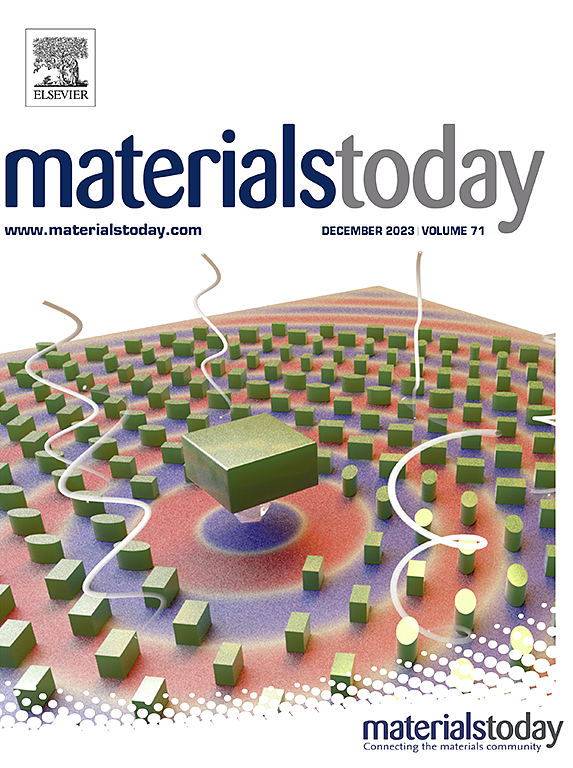通过剪切引导方法实现可变形的3D架构
IF 21.1
1区 材料科学
Q1 MATERIALS SCIENCE, MULTIDISCIPLINARY
引用次数: 0
摘要
通过机械引导方法组装的3D结构和电子设备已经在广泛的新兴领域中找到了重要的应用,包括医疗保健、生物医学工程、可穿戴设备、机器人等。为了通过机械途径扩大可获得的功能3D架构,在这项工作中,展示了剪切引导组装方法。展示了一系列带状、膜状和混合结构形式的结构,这些结构具有以前无法获得的几何特征,例如可逆的局部翻转和中心对称的慈善。有限元分析表明,这种剪切诱导结构能够在不同模态之间进行可逆的装配后形状转换。鉴于上述情况,引入了一种由两个带状3D单元(双3D单元设计)组成的简易设计,并对剪切传感进行了仔细校准。值得注意的是,这种设计能够将难以测量的剪切变形转化为易于获取的垂直位移,同时对有限拉伸载荷不敏感。利用这种双3d单元设计制造了多功能阵列电子界面,表明人机交互具有广阔的潜力。本文章由计算机程序翻译,如有差异,请以英文原文为准。

Morphable 3D architectures enabled by shear-guided approach
3D structures and electronic devices assembled through mechanically guided approaches have found important applications in a wide spectrum of emerging fields, including healthcare, biomedical engineering, wearable devices, robotics, among others. To broaden the obtainable functional 3D architectures via mechanical pathways, in this work, a shear-guided assembly approach is demonstrated. A series of structures in forms of ribbon, membrane and hybrid configurations with previously inaccessible geometrical features, such as reversible local flips and centrosymmetric charity are showcased. Finite element analysis (FEA) is performed, suggesting that such shear-induced structures are capable of reversible post-assembly shape transformation among different modes. Given the above, a facile design, consisting of two ribbon-like 3D units (dual-3D-unit design), is introduced and carefully calibrated for shear sensing. Notably, such design is capable of translating the hard-to-measure shear deformation into easily-accessed vertical displacements while insensitive to finite tensile loadings. A multifunctional arrayed electronic interface is fabricated using such dual-3D-unit design, suggesting promising potentials in human–machine interactions.
求助全文
通过发布文献求助,成功后即可免费获取论文全文。
去求助
来源期刊

Materials Today
工程技术-材料科学:综合
CiteScore
36.30
自引率
1.20%
发文量
237
审稿时长
23 days
期刊介绍:
Materials Today is the leading journal in the Materials Today family, focusing on the latest and most impactful work in the materials science community. With a reputation for excellence in news and reviews, the journal has now expanded its coverage to include original research and aims to be at the forefront of the field.
We welcome comprehensive articles, short communications, and review articles from established leaders in the rapidly evolving fields of materials science and related disciplines. We strive to provide authors with rigorous peer review, fast publication, and maximum exposure for their work. While we only accept the most significant manuscripts, our speedy evaluation process ensures that there are no unnecessary publication delays.
 求助内容:
求助内容: 应助结果提醒方式:
应助结果提醒方式:


